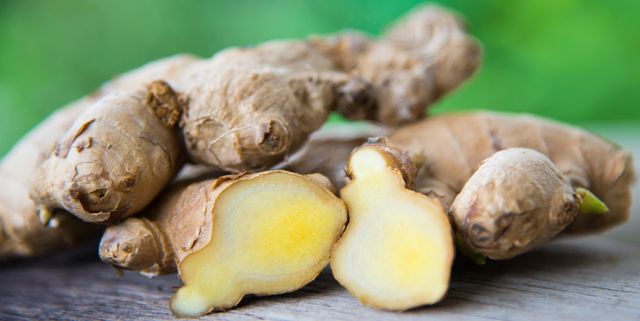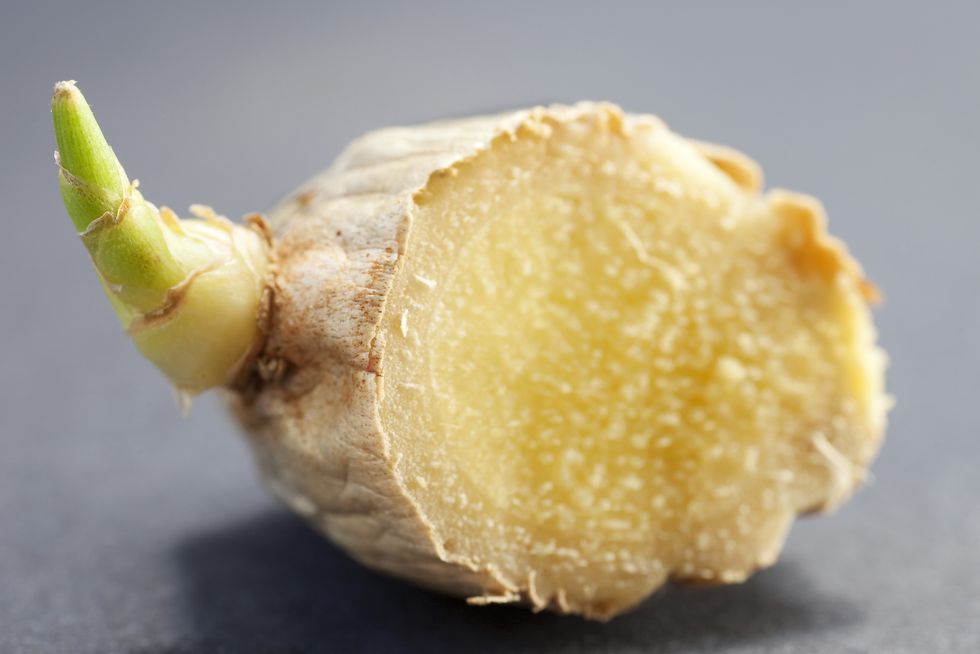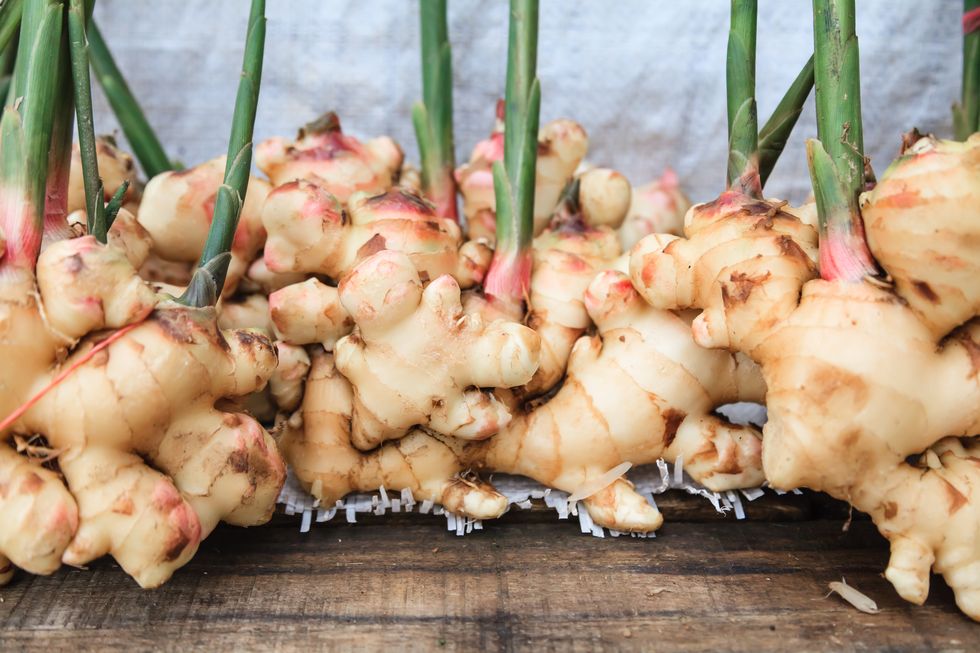Cuttings from the lush, bamboo-like foliage lend fresh flavor to tea or soup stock, and simply rustling the leaves as you pass by releases a heavenly scent. While most American grocers sell only cured ginger — harvested from steamy parts of the globe like China, India, and Nepal — a growing number of specialty growers throughout the Northeast (I’m one of them) harvest baby rhizomes in late autumn.
Here's how you can grow your own ginger outside of the tropics, too:
Find a Root
Buy a piece of ginger the size of your thumb with several bumpy nodules at the tips — these are the buds. Opt for plump chunks, not those withering in their own skin. Skin on the delicate buds should be thinner and lighter colored; forego pieces with darkened buds.
Like potatoes, conventional ginger is irradiated and treated to stop it from sprouting at the supermarket. That means it won’t sprout in your home, either. Choose organic.
Encourage Sprouting
This is the hardest part. Ginger takes its time getting started. To speed it along, create a terrarium using a takeout container with a clear lid. Choose one just a few inches larger than your seed and punch drainage holes in the bottom.
Put an inch or two of potting soil below the seed and sprinkle just a half inch above. Water well. Replace the lid, but don’t seal it. Maintain the soil at 70 degrees and moist to the touch, watering only when the soil dries. A sprout will emerge in six to eight weeks.
Plant in a Large Container
Ginger is a heavy feeder and an even heavier drinker that needs a lot of room to grow. Given the space, a chunk the size of your thumb will easily grow to fill a 2-gallon pot over the course of about six months. Choose a pretty container with good drainage holes and a deep saucer.
Use well-draining, fertile soil with plenty of coir. Gently place your pre-sprouted rhizome on top of 4 inches of soil and bury all but the sprout tip. Place it in a warm, sunny window or in a sunny, sheltered spot outdoors where temperatures range 60 to 90 degrees.
Hill the Soil
Like Irish potatoes, ginger rhizomes will burst through the soil and turn green in the sun. Commercial growers boost yields by watering regularly and hilling the rhizomes once a month. To achieve the same result at home, water weekly with organic plant food and once a month sprinkle several inches of rich compost into your pot, protecting the rhizome itself from solar exposure.
Harvest
Hold the greens at their base, where they emerge from the soil and lift the entire rhizome. (This is a good project to do outdoors over an old newspaper or drop cloth.) Snap off a chunk of the rhizome, then place the rest of the plant back in its pot, sprinkle on more potting soil or compost, water heavily, and treat it gently for a few days. Like any fragile transplant, protect it from glaring sunlight and wild temperature swings for a few days while it recovers.
Enjoy
Baby ginger has a mild flavor and unlike its cured counterpart, it’s juicy with more snap and less string. Best of all, the skin is so thin and pretty, there’s no need to peel. Sauté it with veggies, steep slices in hot water with lemon and honey for a soothing tea,or toss chunks in the juicer with apples, carrots, or kale. Feeling adventuresome? Create an infusion with your favorite libation, steep in simple syrup, or candy it by simmering in sugar syrup.















